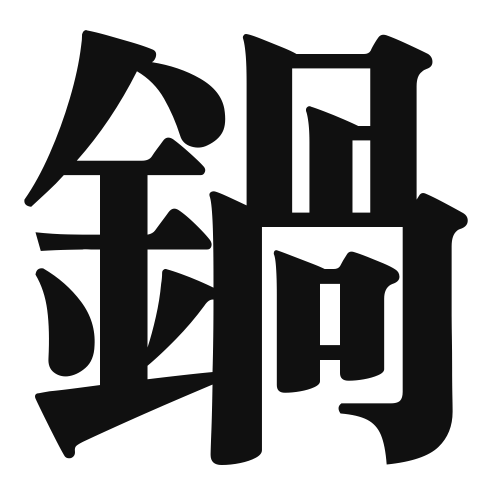1. Overview of Meaning
The kanji “鍋” (nabe) means “pot” or “pan” in English. It refers to a cooking vessel typically used for boiling or simmering food, often associated with communal dining in Japanese culture.
2. Formation and Radicals
Formation of the Kanji: The kanji “鍋” is a compound character (会意文字) made up of two parts: the radical “金” (meaning “metal”) and the character “韋” (which originally referred to leather). This indicates that the pot is often made of metal.
Radical: The radical of “鍋” is “金” (kin), which is commonly associated with metals and materials.
3. Examples of Usage
Common Words and Phrases:
- 鍋料理 (nabe ryouri) – hot pot cuisine
- 鍋を囲む (nabe o kakomu) – to gather around a pot
Example Sentences in Daily Conversation:
- 今夜は鍋を作りましょう。 (Kon’ya wa nabe o tsukurimashou.) – Let’s make a hot pot tonight.
- 鍋を囲んで、みんなで楽しく食べました。 (Nabe o kakonde, minna de tanoshiku tabemashita.) – We gathered around the pot and enjoyed eating together.
4. Synonyms and Antonyms
Similar Kanji:
- 釜 (kama) – This kanji also means “pot,” but it typically refers to a kettle or a pot used for boiling water.
Antonyms:
- 皿 (sara) – This kanji means “plate,” which is used for serving food rather than cooking it.
5. Cultural and Historical Background
Relation to Japanese Culture: The concept of “鍋” is deeply rooted in Japanese culture, especially in winter when families and friends gather to enjoy hot pot meals. It symbolizes warmth and togetherness.
Proverbs and Idioms: One common saying is “鍋は心を温める” (Nabe wa kokoro o atatameru), which translates to “A pot warms the heart,” emphasizing the communal and comforting nature of sharing a meal from a pot.
